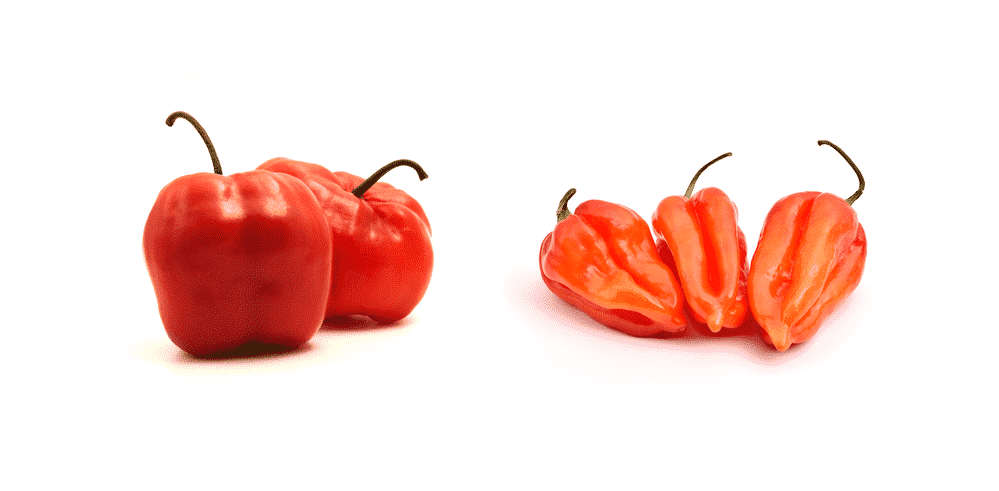
Capsicum has always been an important part of our pantry but everything thought there was only variety available in three colors (red, yellow, and green). Contrary to this usual belief, there are other varieties, such as chile Manzano vs. habanero and we are sharing everything you need to know about these two varieties.
Chile Manzano vs Habanero
Manzano Chile
This capsicum is basically native to Peru, Ecuador, and Bolivia and has been around since pre-Incan times. In addition, traces of this capsicum variety can also be seen in the Guitarrero caves. This is known to be a chili pepper and has become a common ingredient in Ilajwa, the Bolivian sauce.
This sauce is native to Peru and can be consumed in ground, pasted, fresh, and dried form. As far as the name is concerned, Manzano is famous by this name in Mexico (the name is given due to apple shape).
In addition, it can be readily found in South America and Central America and it also has hairy leaves. There are black seeds in the pepper which makes it unique to other varieties. Some people also ripe these peppers more than needed, and goes by the name tree chili. What’s best about these peppers is that they can withstand cold temperatures but it cannot handle frost. The peppers grow on the shrub plants as well as climbing vines.
The plant can grow up to four meters and has a lifespan of fifteen years. Moreover, the plants grow flowers on the shoots. As we have already mentioned, the cultivation is done in Peru and Bolivia but it is also available in Central America and Mexico.
It wouldn’t be wrong to say that it’s the domesticated pepper and doesn’t have any wild form associated with it. In addition, it goes back to 6000 B.C. which makes it one of the oldest domesticated plants of America.
Coming to the flavor and heat level it ranges from 30,000 SHU to 50,000 SHU but it can be even higher in some cases. It is generally called el mas picante de los picantes which translates into the hottest of hot. As far as the consumption is concerned, it can be served in sauces as well as fresh salsas. In addition, if you buy large pods, you can stuff them with cheese or meat and bake them to make a perfect meal.
Habanero
Habanero is one of the many chilies from the hot variety. There are different colors available in habanero but the unripe ones remain green. However, they change color as they mature and common color options include, white, orange, red, brown, green, purple, and yellow.
For the most part, the ripe habanero ranges from 2cm to 6cm. As far as the flavor is concerned, it’s pretty hot and ranges from 100,000 SHU to 350,000 SHU which is why they are often confused with jalapenos.
Habanero is known for the floral aroma but overall flavor and heat are also great. Given this spiciness level and flavor, these chilies are suitable for spicy recipes and hot sauces. The chilies are native to Amazon but are also supplied to Mexico.
Given the spicy flavor, it is readily used in Cuban cuisine. There are different forms of habanero available in the market, such as salsa and puree. As far as the fruit is concerned, it has waxy and thin flesh and pungency is pretty amazing.
However, some experts have said that pungency can be impacted by the climate they are grown in, growing methods, stress, and genetics of the plants.
What’s most surprising is that these peppers are hot but the hotness settles in after a few minutes and the taste will stay in your mouth for over an hour (the sensation stays in the esophagus). The plants can thrive and grow in hot weather and it’s best to plant them in an area where the soil pH level ranges from five to six.
In addition, the habanero plant thrives well where sufficient morning sun falls on the plant. The plants are watered regularly to enhance vegetative growth. Habanero grows around the year if you are planting them in subtropical and tropical areas.
Also, if the planting conditions are promising, the plant will keep giving fruit without any break. Lastly, if the peppers are too hot for you, it’s best to drink milk because water will worsen it!